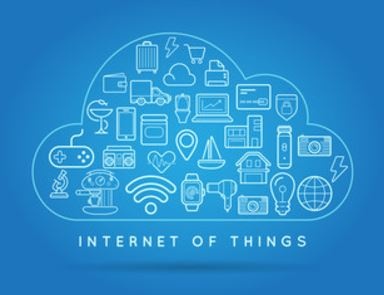
Gartner has included the Internet of Things (IoT) in its list of Top 10 Strategic Technology Trends for 2018. IoT will contribute to the emergence of digital twins. Digital twins link to real-world objects, providing information on the status of  company assets. Information gathered from digital twins is then used to better manage, maintain, and repair equipment.
company assets. Information gathered from digital twins is then used to better manage, maintain, and repair equipment.
With Gartner estimating that 21 billion connected sensors will be active by 2020, IoT stands to become a key factor in the way companies will manage their assets and make operational decisions in the future. To maximize the value of IoT, devices must maintain high levels of connectivity and interoperability. Data needs to be collected from remote sensors and processed to reach the insights needed to make business decisions.
Cloud services are ideal for storing and managing the data gathered by connected devices as well as hosting the applications needed to process the data.
Managing IoT Data
As companies embrace IoT, they will see increasing amounts of data pouring into their data centers. Meeting the capacity needs of the data coming in from beacons and sensors will be challenging. Organizations new to IoT may have trouble anticipating how much their data volume will increase so having a network that can easily scale to accommodate peaks is critical. IoT data also tends to come in either small packets or in surges of activity that can be hard for a traditional infrastructure to handle.
Infrastructure as a service (IaaS) in the cloud enables companies to scale quickly to meet the new capacity demands of IoT. Instead of risking over provisioning by predicting demands, IT leaders can provision storage resources in the cloud as needed.
Making a Cloud Connection
The cloud allows companies to achieve the level of connectivity they need to make the most of IoT data. Data must move quickly and securely between the connected device and your infrastructure. A fast connection empowers your business to make real-time, actionable decisions about your valuable assets. Ideally, IoT should enable your company to make predictive maintenance decisions that prevent equipment failures.
The right cloud service will provide a high-speed and reliable symmetrical internet connection that creates a two-way conversation between the cloud and IoT devices. Sensors can send data to the cloud for processing and analysis. Then the cloud can send messages to the devices about how to adapt.
The cloud can speed up the process by allowing for edge or fog computing. Instead of sending the information all the way to the cloud infrastructure, the device can send it to a local router or switch where it can be analyzed and sent back.
Cloud: The Brains of the Operation
Part of the value of connected devices comes from their ability to automate and customize operations. However, companies don’t always take advantage of the significant value created by IoT data. Without the right analytics applications, organizations can’t gain insights from this data.
Software as a Service (SaaS) gives companies access to advanced analytics applications so they can make the most of IoT data. Analytics applications can also be hosted on Platform as a Service (PaaS) arrangements. By hosting these applications in the cloud, your business keeps up with the latest application updates.
Seeing IoT Pay Off
Companies that embrace the trend toward IoT stand to profit greatly from the insights that can be mined from sensor data. The McKinsey Global Institute predicted that IoT will add $3.9 trillion to $11.1 trillion a year to the global economy by 2025. Using the cloud increases the odds that your company will be able to manage and process IoT data profitably.
Choosing the right cloud provider is the foundation for making IoT work for you. FirstLight offers the fastest and most reliable connectivity for cloud through its extensive fiber optic network. With FirstLight, your business gains access to cloud services through a secure, low-latency connection that reaches speeds of up to 100 GB per second.
Hear experts share insights on IoT and the cloud. Register for the 2017 Cloud Connect Summit.




















